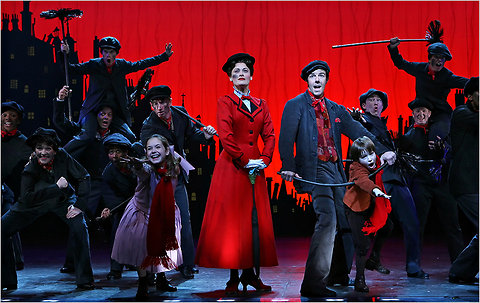Are there any thrills left in what was supposed to be Hollywood’s medium of the future?
For some, George Clooney’s chin in Imax 3-D — digitally remastered for the large-format version of “Gravity,” due from Warner Brothers on Oct. 4 — might qualify. So it’s not over yet.
But in general, filmgoers in North America — having sampled three-dimensional viewing in films as breathtaking as “Avatar” and “Life of Pi,” — are drifting back to conventional theaters. That is happening despite an aggressive digital conversion program by exhibitors, who raised the number of domestic 3-D screens to almost 15,000 at the end of last year, more than four times the count in 2009.
This summer, films like “Turbo” and “The Wolverine” took in 30 percent or less of their opening weekend receipts from 3-D sales, compared with levels as high as 60 percent for summer films only a few years ago.
According to the IHS research firm, receipts from 3-D ticket sales at the North American box office fell 13.1 percent in the first half of 2013, to about $1.05 billion, from $1.21 billion in the year-earlier period. In another closely watched measure of the medium, RealD, which supplies 3-D technology to theaters both here and abroad, last week reported a net loss of $1.5 million in its fiscal first quarter ended June 30, compared with net income of $2.9 million in the year-earlier period. That happened as revenue dropped 13.1 percent, to about $59.2 million from about $68.2 million a year earlier.
Despite these numbers, Hollywood remains committed to at least five dozen 3-D movies through 2016, according to a recent count by Exhibitor Relations, a box-office consultant. And some of those films promise to create a fresh shiver, if not quite the same jolt that accompanied Baz Luhrmann’s garish, three-dimensional rendering this spring of “The Great Gatsby.”
In “Gravity,” which is directed by Alfonso Cuarón, Mr. Clooney joins Sandra Bullock in a cast of two (not counting disembodied voices). They play astronauts who find themselves adrift in space after a shuttle accident.
To approximate a tumble through the silent cosmos, the actors were photographed with specially designed robotic cameras that would race at 25 miles per hour to within an inch of a multimillion-dollar nose.
“If that robot did decide to continue through my face, I couldn’t get out of its way,” Ms. Bullock said last month during a presentation at the Comic-Con International fan convention in San Diego.
On Sept. 20, film purists may feel shock of another kind, when a much-loved classic, “The Wizard of Oz,” is released for an exclusive, one-week run on Imax screens in a 3-D version from Warner Brothers. Relatively few people now living have ever seen the 1939 film in a theater, never mind in three dimensions.
The mini-release will help promote a five-disc home video set, which includes a version playable on 3-D televisions. It is also part of an Imax strategy intended to create unusual events on its large-format screens during the late summer and early fall weeks when the blockbuster business has trailed off.
Thus, “Metallica Through the Never,” another unusual 3-D film, this one from Picturehouse, will have an exclusive one week-run in Imax theaters beginning Sept. 27.
Its novelty comes not just from the placement of cameras inside the heavy metal band’s perimeter during performances of a semi-violent concert-in-the-round, but also from an effort to bring sound — lots of it — into the equation.
“The audio is a massive contributor to the effect of 3-D,” said Greg Foster, a senior executive vice president for Imax Corporation.
Speaking by telephone recently, Mr. Foster said the future of movies in 3-D depends on the willingness of directors like Nimrod Antal, who made the Metallica film, to treat the medium and its potential with respect. “It all depends on the filmmakers being fully invested, and owning it,” Mr. Foster said.
One deeply invested filmmaker is Robert Redford, who is working on a subtler but no less intriguing project in 3-D. Mr. Redford is contributing one segment to an anthology-style documentary, “Cathedrals of Culture,” about various architectural masterpieces.
Overseen by Wim Wenders, whose contribution is a 3-D look at the architect Hans Scharoun’s Berlin Philharmonic Hall, the film is expected to appear both on television and in theaters sometime next year. Mr. Redford is directing a 26-minute examination of the Salk Institute’s mysteriously placid ocean-side campus, which was designed by Louis Kahn and built 50 years ago in La Jolla, Calif.
“Some people have said it’s a sacred place,” said Laura Michalchysyn, who is a producer of the project.

This article has been revised to reflect the following correction:
Correction: August 11, 2013
An earlier version of a picture caption with this article described the image incorrectly. It was a stereographic image of American soldiers in World War I; it was not a negative.
Article source: http://www.nytimes.com/2013/08/12/business/media/appeal-of-3-d-wanes-but-new-releases-are-still-planned.html?partner=rss&emc=rss
